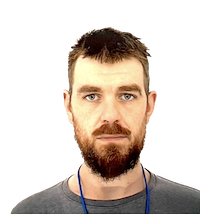
Thomas D Swinburne (Tom)
CNRS Researcher,
CiNAM,
Luminy, Marseille
thomas "." swinburne "@" cnrs "." fr
CV
/
Google Scholar
/
GitHub
We’re hiring: PhD & Postdoc (ANR DAPREDIS) PhD Application
New approaches in computational metallurgy
Keywords: data-driven coarse-graining, uncertainty quantification, atomic simulation, rare event sampling, dislocation plasticity, Markov chains
Metal alloys are uniquely strong, ductile and recyclable.
Predicting how metal components fail remains a grand challenge,
limiting performance, reducing lifetime and raising emissions.
We use ideas from condensed matter physics, dislocation theory and
machine learning to discover the atomic mechanisms of plasticity
and diffusion.
A central focus is quantfying uncertainty in data-driven
models spanning many time/length scales.
Recent Preprints / Papers (‡ = sole/corres.)
‡Implicit differentiation in MD (postdoc I Maliyov)
ArXiv 2024
‡Misspecification uncertainty for low-noise models
ArXiv 2024
MACE foundation model (Csyani Group, Section A.13)
ArXiv 2023
——-
‡Free energies from mean-field bonds (PhD R Dsouza)
Phys. Rev. B 2024
‡Coarse-graining & forecasting MD with descriptors
Phys. Rev. Lett. 2023
‡Embedded ab initio with QM/ML (postdoc P Grigorev)
Acta Mat. 2023
A15 defects in FCC (Marinica Group / TAMMBER)
Nat. Comm. 2023
‡Ill-conditioned Markov chains (Wales Group / PyGT)
Proc. Roy. Soc. 2023
Some Invited Conferences / Seminars in 2024
MRS Fall Meeting, Boston, November
UQ Meeting, Max Planck Magdeburg, August
CIMTEC Conference, Tuscany, June
IMSI Long Program, U Chicago, March-June
——-
General Physics Seminar, École Polytechnique, November
International Nuclear Engineering Colloquium, MIT/Oxford (remote), November
Engineering Seminar, U Oxford, October
Chemistry Seminar, U Cambridge, October
Hattrick-Simpers Group Seminar, U Toronto, July
UQ Seminar, LLNL, June (remote)
Mech Eng Seminar, U Michigan, February
TYC Seminar, Imperial College London, January